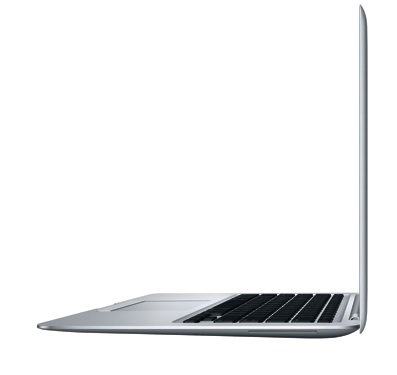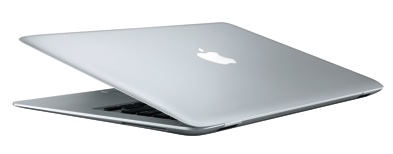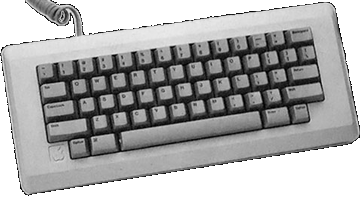MacBook Air

Essentials
Family: MacBook Air
Codename: ?
Gestalt ID: 406
Minimum OS: 10.5.1
Maximum OS: 10.7.5
Introduced: January 2008
Terminated: October 2008
Processor
CPU: Intel Mobile Core 2 Duo (P7500)
CPU Cores: 2
FPU: integrated
Bus Speed: 800 MHz
Register Width: 64-bit
Data Bus Width: 64-bit
Address Bus Width: 64-bit
Level 1 Cache: 32 kB data, 32 kB instruction
Level 2 Cache: 4 MB on-processor
ROM: EFI
Onboard RAM: 2 MB
Maximum RAM: 2 GB
Video
Screen: 13.3" LED-backlit TFT
GPU: Intel GMA X3100
VRAM: 144 MB shared (see notes)
Max Resolution: 1280x800
Video Out: micro-DVI
Camera: iSight
Storage
Hard Drive: 80 GB 4200 RPM (w/SMS)
ATA Bus: Parallel-ATA
Optical Drive: optional external
Input/Output
USB: 1 2.0
Audio Out: stereo 24 bit mini
Speaker: mono
Microphone: mono
Networking
Wi-Fi: 802.11a/b/g/n
Bluetooth: 2.1+EDR
Miscellaneous
Power: 45 Watts
Dimensions: 0.16-0.76" H x 12.8" W x 8.94" D
Weight: 3.0 lbs.

Notes
The MacBook Air's graphics chipset used a portion of main memory as VRAM. Though reported as a 144 MB graphics system, the chipset actually used up to 160 MB of RAM, resulting in a maximum of 1888 MB of RAM available for system use in the base system.
Announced in January 2008, the MacBook Air was the thinnest Apple laptop yet released. It was positioned as a high-end ultra-portable system, and Apple had to make some sacrifices to get it there: At 1.6 GHz (1.8 GHz BTO), it was slower than other contemporary Apple laptops, its 2 GB of RAM was non-upgradable, it had a smaller, slower hard drive, no firewire ports, no ethernet port, a single USB port, no optical audio output, no audio input, and, for the first time since the PowerBook 2400, no internal optical drive.
There were sacrifices Apple did not make: the MacBook Air included a full-sized keyboard and screen, and an oversized trackpad, which supported many of the same multi-touch gestures introduced by the iPhone. To mitigate the connectivity and hardware tradeoffs necessary to make the MacBook Air so thin, Apple offered various accessories: an optional external 8x SuperDrive, a USB-to-ethernet adaptor, a USB 56kbps modem, and various micro-DVI adaptors.
The MacBook Air shipped in a single retail configuration, with a 1.6 GHz dual-core processor, 2 GB of RAM, and an 80 GB hard drive, for $1799. BTO options included a 1.8 GHz processor ($200), and a 64 GB solid-state drive ($999, later dropped to $599). The MacBook Air was replaced in October 2008 by the MacBook Air (Late 2008).
Picture Credits:
Apple, Inc.
